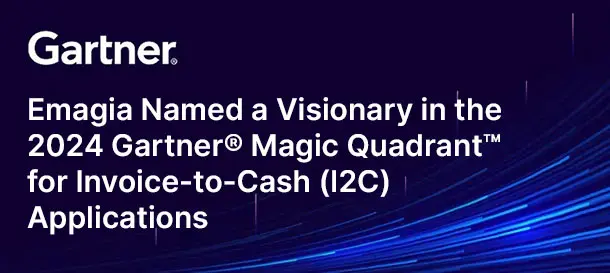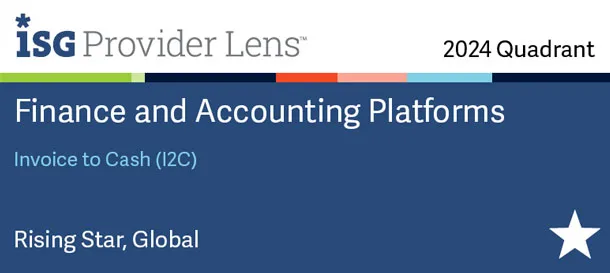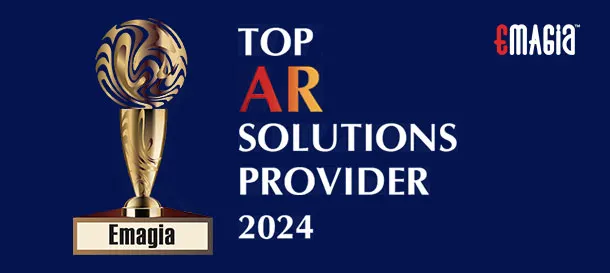Businesses adept at forecasting invoice payment timelines from their customers (AR) find it deeply advantageous in planning the payment of supplier invoices A study by Deloitte reveals a shift in the financial management focus of many CFOs from long-term perspectives of profitability and growth to more immediate business continuity risks and cash flows, particularly during and post-COVID-19 era. Gaining critical insights into future cash flow when AR information resides across disparate systems and relies on time-consuming manual processes proves inefficient and time-consuming.
Until recently, finance teams managing cash flow have relied on manual processes that suffer from a lack of accuracy and inability to adapt quickly to changing market dynamics, making accounts receivable (AR) and accounts payable (AP) management challenging for the respective managers.
This is where artificial intelligence (AI) and machine learning (ML) capabilities can transform and optimize cash flow forecasting and management. However, CFOs must choose the highest quality and best fit ash flow forecasting tools for their businesses, that are more accurate, efficient, and predictive, to help maintain a competitive edge and drive decision-making.
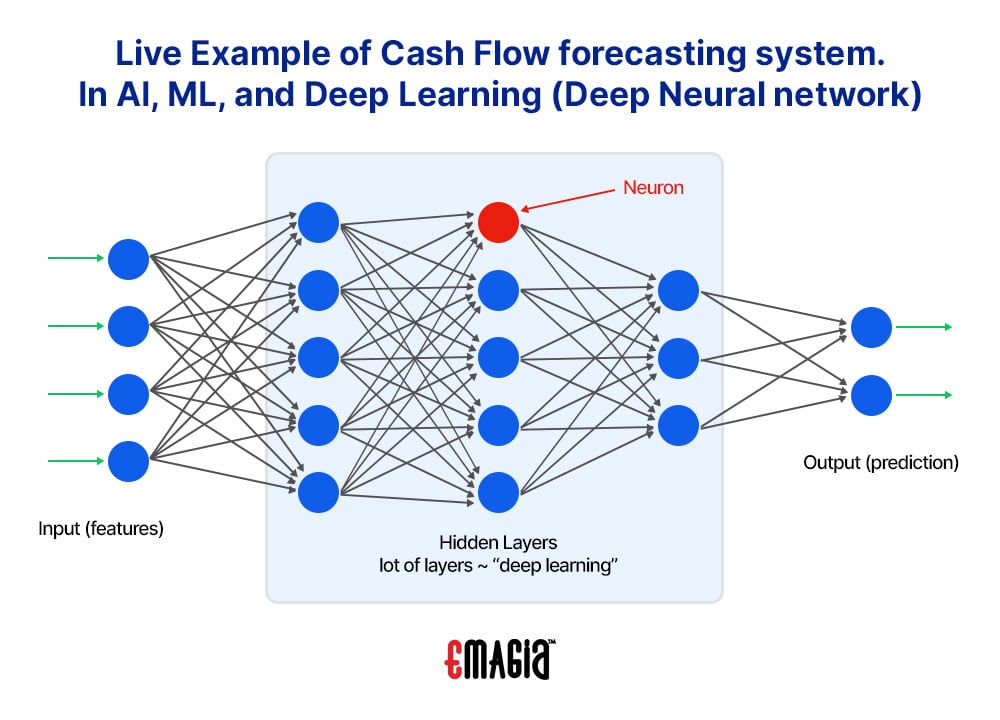
Why is Cash Flow Forecasting Essential to Support the Profitability and Growth of Businesses
To make informed decisions regarding supplier orders, what inventory of materials or finished goods to maintain (depending on the industry they are in), staffing additions, or marketing budgets, businesses should be able to anticipate its cash position.
Cash forecasting supports a range of high-value business activities that are critical for the health of the business in the short and long run. The business objectives supported by cash forecasting often include:
- Working Capital Management: Adequately plan and budget for short-term cash and working capital needs.
- Debt and Interest Reduction: Use excess cash to reduce debt levels and interest costs, improving profitability.
- Contracts and Key Date Visibility: Accurately project expected cash levels to meet covenant levels on key reporting dates.
- Liquidity Risk: Provide an early warning of future problems of not being able to pay suppliers, employees, statutory payments, and debits on time
Businesses cannot wait for cash to be physically available instead of proactively planning cash flows based on forecasts to drive the profitability and growth of the business.
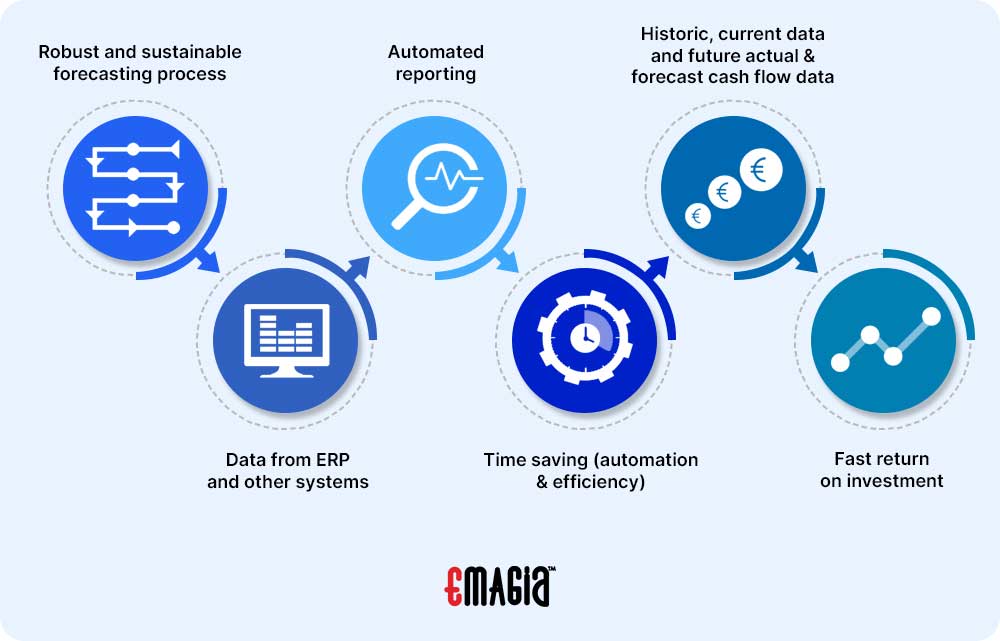
The Critical Role of Artificial Intelligence in Cash Flow Forecasting
Cash flow forecasting requires data for accurate projections, but accessing it traditionally can be challenging. . The data sits in the accounts receivable, more precisely in customer invoices, together with not just the agreed payment terms but the historical trend of the time each customer takes to pay invoices. In the absence of insights into future cash positions, businesses may decide to borrow to fund their crucial operations and ongoing growth prospects.
The cash flow forecasting process refers to estimating future cash inflows from various sources and outflows to various creditors or spending for a timeframe in the future. However, accuracy and efficiency are of utmost importance in cash forecasting, without which it can be counterproductive.
Machine Learning (ML) and Artificial Intelligence (AI) can play a crucial role in analyzing historical financial data, such as past receipts and payments, to discern patterns and inform projections. AI-enabled cash flow forecasting allows AP and AR teams to enhance the health and position of their company.
How Does AI and Related Technologies Work in Intelligent Forecasting of Cash Flow?
In industry-leading cash flow forecasting solutions like that offered by Emagia, the ML helps platforms build up a history of receipts and payments over time providing trends that the AI tools can draw upon. This enables AI to predict when cash will come into the business based on the paying behavior of the customers. The following capabilities of the forecasting tools powered by AI, ML, and Analytics enable businesses to plan payments of suppliers’ invoices and commit to growth investments, without disrupting the business operations and borrowing expensive funds:
Adjustments in Real-Time
Machine learning makes continuous real-time adjustments, incorporating external factors like natural disasters or supply chain disruptions to create accurate cash flow forecasts. If such events resulted in payment delays in the past, the AL and ML can help businesses predict how they may be impacted should a similar event occur in the future.
Integration with ERP
Automated cash forecasting application integrates with organizations’ ERP and leverages information to create customer profiles of its average payment time, credit limit, average days overdue, and the timing of deviations in payment behavior. The data is then leveraged to forecast when an invoice can be expected to be paid and how much money the business will receive on any given day or different period. This enables the creation of strong AP payment plans.
Predictive Analytics
AI algorithms predict when and how much cash will come into the business in a given period based on each customer’s payment history and trend. More importantly, it will also predict which customers won’t pay on time, enabling the AR collection team to focus its efforts on avoiding bad debt. The platform learns continuously from the AI and ML to provide the most up-to-date data to create the most accurate projections.
Why AI Matters in Working Capital Planning and Cash Flow Forecasting
Enhanced forecasting can help companies build resilience, navigate liquidity concerns, and stop organizations from getting into distressed situations, according to Deloitte’s recent research. AI-enabled cash forecasting tools automatically collect and analyze data from ERP and other applications, providing valuable insights for informed decision-making, optimizing working capital, and negotiating better terms with suppliers and creditors.
The platform’s comprehensive view allows CFOs to identify gaps, risks, and opportunities in cash flow cycles, providing a deeper understanding of drivers and challenges
By selecting the best-rated AI-powered cash flow casting solutions that are developed by firms with years of experience in the field, financial leaders can navigate the complexities of cash flow management, explore new opportunities, and position their companies for long-term growth.
FAQs:
1. What is Cash Flow Forecasting?
Cash flow forecasting is the process of estimating the cash inflows and cash outflow of a business over specific future periods. A realistic cash flow forecast enables organizations to predict future cash positions to avoid situations of cash shortages and as well earn returns on any cash surpluses in the most efficient manner possible.
2. What is Meant by Funding Liquidity Risk?
Liquidity is measured by how quickly an asset or security can be converted to cash. There are two different types of liquidity risk: funding liquidity or cash flow risk and market liquidity risk or asset risk.
Funding or cash flow liquidity risk is the risk of not being able to fund the liabilities, measured by ratios like current ratio (current assets/current liabilities) or, quick ratio. Market or asset liquidity risk refers to the inability of the investor to easily exit a position like in a situation where the asset has value, but there are no current buyers, and hence the fair value of the asset cannot be realized.
3. What Should Businesses Look for in AI Forecasting Tools?
The key is the capability of AI predictive tools to help turn raw data into scientific forecasts with clarity and ease. An ideal AI-enabled forecasting tool must have both forecasting models and evaluating them on historical data as well as intelligently predicting future trends.



